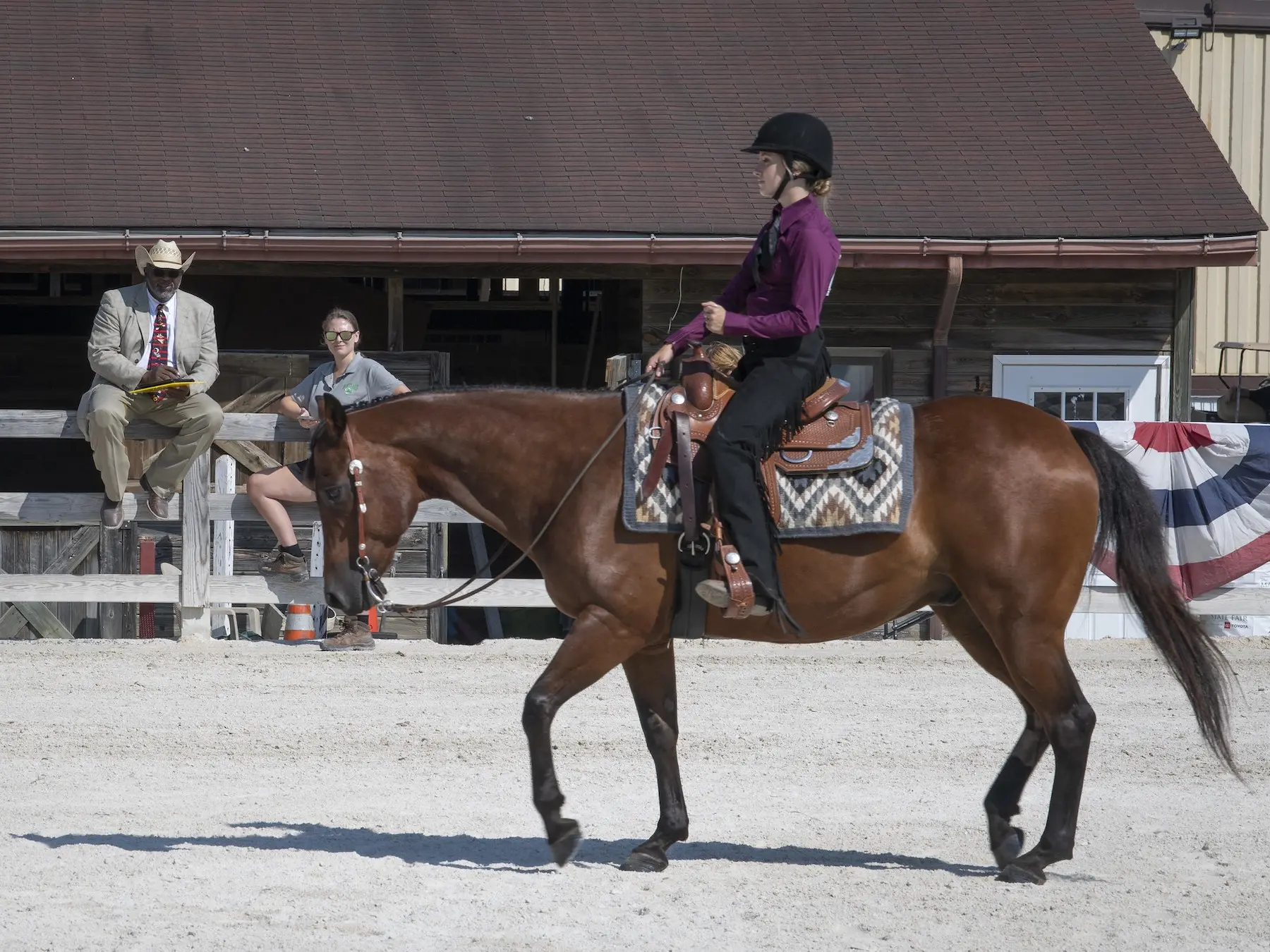
Universal Western Lingo
Back
Backing must be done quickly, in a perfectly straight line and with no hesitation.
Back Cinch
A second girth on the western saddle used to keep the saddle from tipping during quick maneuvers.
Flying Change
When a horse changes their lead with both front and hind legs in mid-stride.
Head Set
Refers to the height and angle of the horses head while in motion.
Jog
A slow trot that has a two-beat gait as diagonal legs hit the ground at simultaneously.
Lope
A slow canter that has a three-beat gait and can have a right or a left lead.
Neck Rein
Turning a horse by applying pressure from the reins on one side of the neck or the other.
Stock Seat
A generic term used to describe most disciplines of western riding.
Tom Thumb
A Pelham bit used on western bridles.
Tie down
Used to control the position of the horses head while riding. (Also called martingale)
Western
A style of riding characterized by a larger saddle with a pommel and a horn.
Western Classes
Best-Fit
A class which judges how well a horse has been cleaned up for the show.
Cutting
A class in which the horse and rider cut (or separate) one cow from a heard. Scoring is based on the teams ability to anticipate cow movements and keep them away from the herd.
Halter
A class which judges the animal by their confirmation & movement based on official breed standards.
Horsemanship
A class which judges the rider on their seat, position and poise as they complete a predetermined pattern.
Pleasure
A class which is judged on the horse as they go through their gaits on the rail. Horses are judged on their manners, disposition and smoothness of gaits.
Reining
A class which puts horse and rider through a series of patterns designed to mimic a herding horse at work. Scoring is based on the perfection of each movement.
Roping
A class in which horse and rider jump after a released cow on cue, chase the cow, rope it and bring it to the floor. Scoring is based on maneuvering and time.
Showmanship
A class which judges the handlers ability to show their horse in-hand.
Trail
A class which puts horse and rider through a series of obstacles designed to test agility, manners and teamwork.
More On The Way
This is just the beginning, the rabbit hole of western horse show terminology goes much deeper. We’ve sub-dividing categories like crazy & learned a lot in the process.Please feel free to comment anything we’ve missed in the basics & check out some more terminology.
Little note: The horse you have pictured under “Reining” is actually a horse being used for barrel racing.
Hi Shannon,
Thanks for the tip. I’ve updated the image, & hopefully I’ve got it right this time. 😉
Sad. The horse in the Pleasure class pic has his head so low. He looks depressed. Aren’t the heads supposed to be level??
I ride dressage, walking on a long, loose rein with the horse stretching his head and neck down is a typical warm up / warm down technique, it is thought to be relaxing to the horse and give his back and neck a nice stretch before / after work…but I do not know if this applies in this context.
I don’t know but in Western I don’t think much contact is made with the mount’s mouth, so it might be caused by that.
Hi i think u should add barrel racing and rodeo events. i know alot of people who have looked at ur website and want to see rodeo things
Hi, the standards of western pleasure classes require the horse to have a level head, in line with the withers. They want the horse to be able to navigate with little contact, because the idea is for the rider to use their seat and legs to control their horse so their hand can be free to rope, work cattle, etc.
hey what is showmanship? is it based on the person or the horse.
Thanks
Showmanship is based on the person. It’s typically like a halter class, but instead of focusing on the horse’s conformation and appearance, it focuses on how well the handler performs and exhibits the animal. It does factor in how well the horse looks, but not necessarily on how closely it comes to breed standards. Showmanship is also used in many other animal classes, such as hogs, cattle, sheep, rabbits, and poultry.
Hi! i was wondering what command is?
if you cant help me, its fine. thank you!